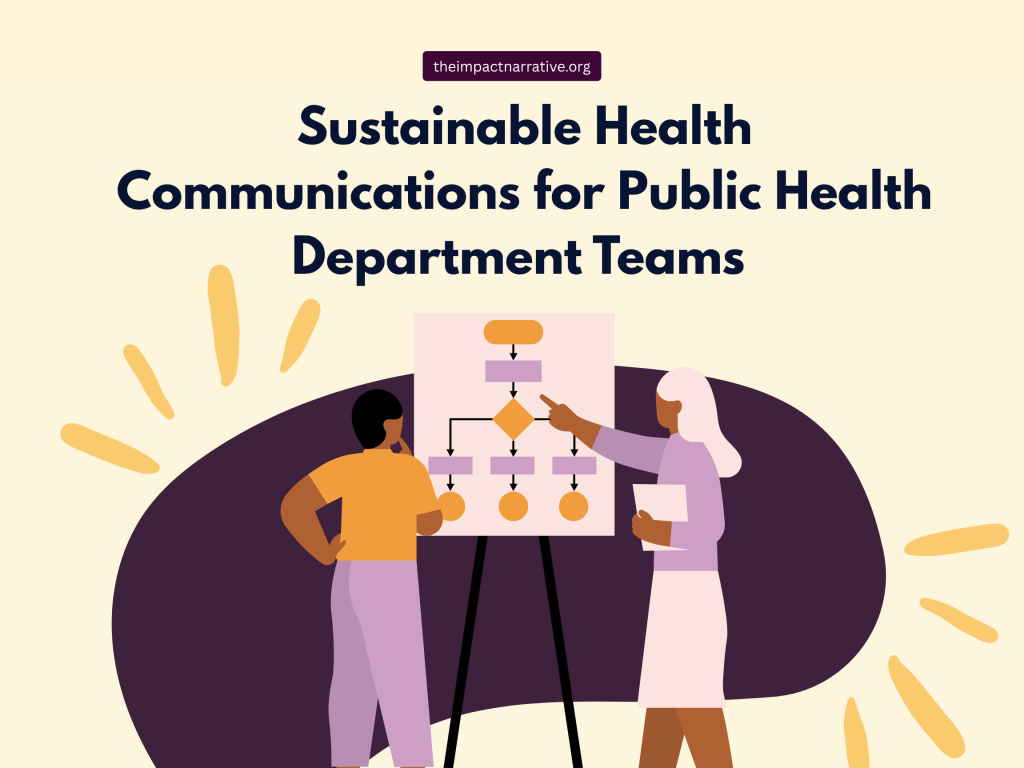Blog
Read stories and case studies from our work at the intersection of strategy, design, and impact. From evaluation insights to community-driven campaigns, we break down how data and storytelling drive better public health outcomes.

Sustainable Health Communication Strategies
for Public Health Department Teams
Public health teams face constant pressure to communicate clearly, consistently, and credibly, often with limited time, capacity, budget, resources, or all of the above. While campaigns and one-time messages can generate bursts of attention, sustainable health communications require long-term planning, internal alignment, and systems that support continuity beyond any single staff member or funding cycle.
Why Sustainability in Communications Matters
Sustainability in health communications isn’t just about having enough content to post, it’s about building robust, resilient processes that strengthen community trust, engage stakeholders, and amplify the impact of your messages over time.
- Inconsistent messaging
- Duplicated efforts across teams or underutilized partnerships
- Missed opportunities for engagement
- Communication gaps during staff transitions or emergencies
In contrast, sustainable health communication systems foster clarity, coordination, and lasting impact—especially when tied directly to your department’s mission, equity goals, and public engagement strategies.
Core Elements of Sustainable Health Communications
1. Standard Operating Procedures (SOPs) for Messaging and Workflow
2. A Centralized Communications Calendar
3. Templates and Message Banks
Reusable templates for flyers, newsletters, graphics, and social posts save time and improve brand consistency. Maintaining a message bank of pre-approved content can streamline response in high-pressure moments.
Consider: Templates for time-sensitive emails (surveys), monthly meeting reminders, or meeting minutes.
4. Data Informed Messaging
Sustainable communications are grounded in data—both quantitative and qualitative. Use local health trends, community feedback, and platform analytics to adjust tone, format, and content.
Ask: What platforms are our audiences actually using? What messages are performing best? Where are we seeing gaps?
5. Cross-Department Collaboration
Silos often lead to duplicated efforts, conflicting messages, or missed opportunities to amplify impact. Regular check-ins between program teams and communications staff can ensure alignment around shared priorities and timelines. Consider:
- What messaging tasks can be delegated or streamlined?
- Can your program team develop content while the communications team leads dissemination?
Pro tip: Involve community engagement and communications staff early in the planning process—they often bring valuable insights that can shape messaging to be more responsive, relevant, and culturally grounded.
Final Thoughts
Sustainable health communications aren’t just efficient, they’re empowering. When your team builds repeatable, responsive systems, you create space for creativity, trust-building, and long-term public health impact. With the right tools, processes, and cross-team collaboration, public health departments can move from scrambling to strategic, and from informative to transformational.
Need Help Getting Started?
We offer strategic templates, SOP toolkits, and communication audits to support health departments in building sustainable, equity-driven communications systems. Join our email list for more tools, insights, and ways to partner.

